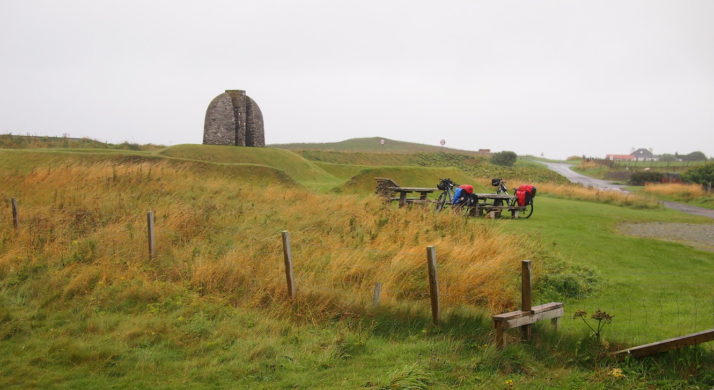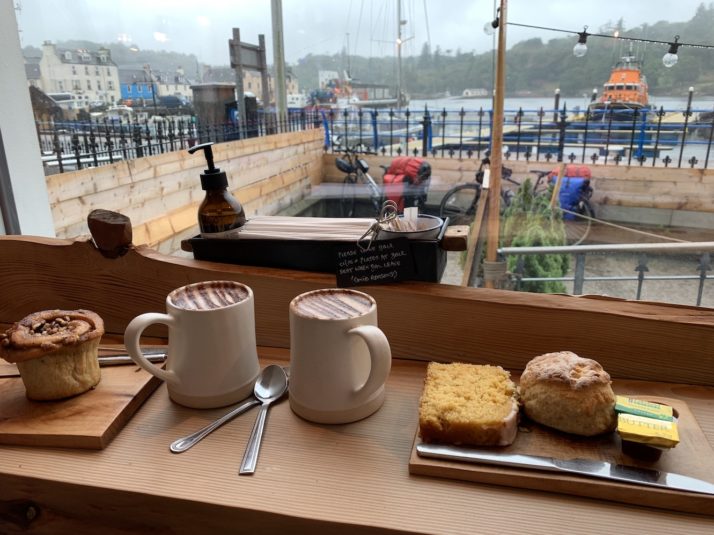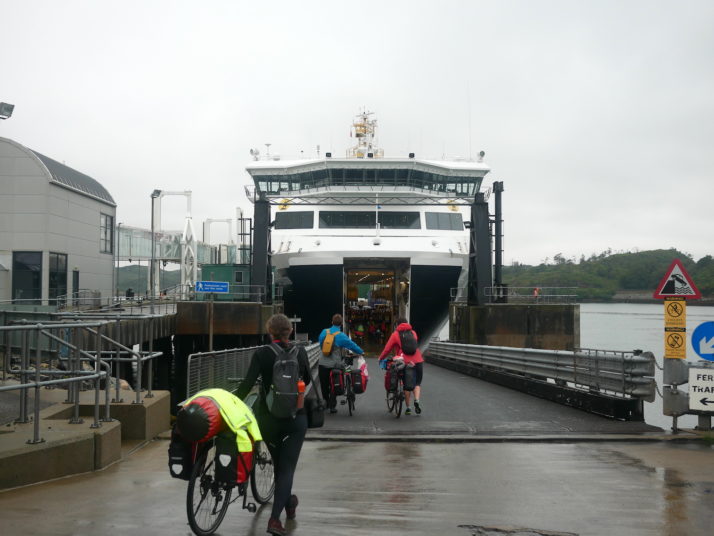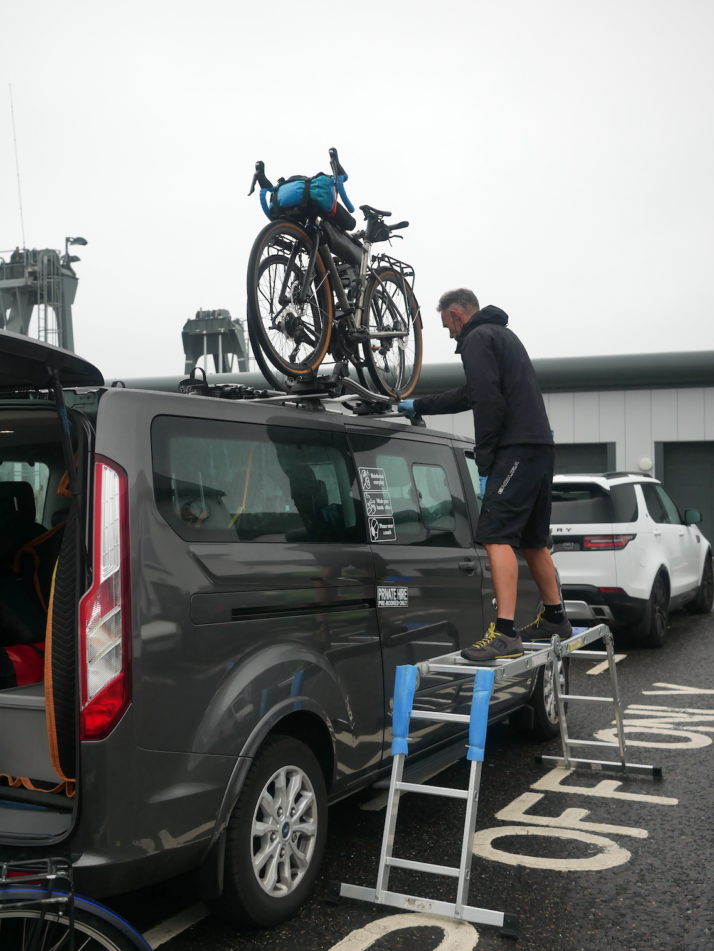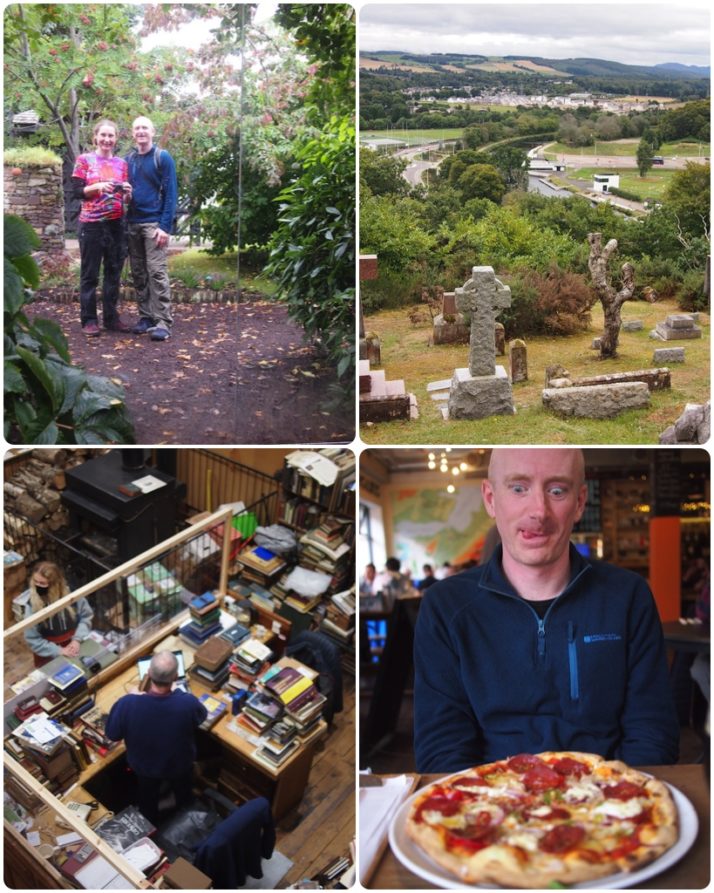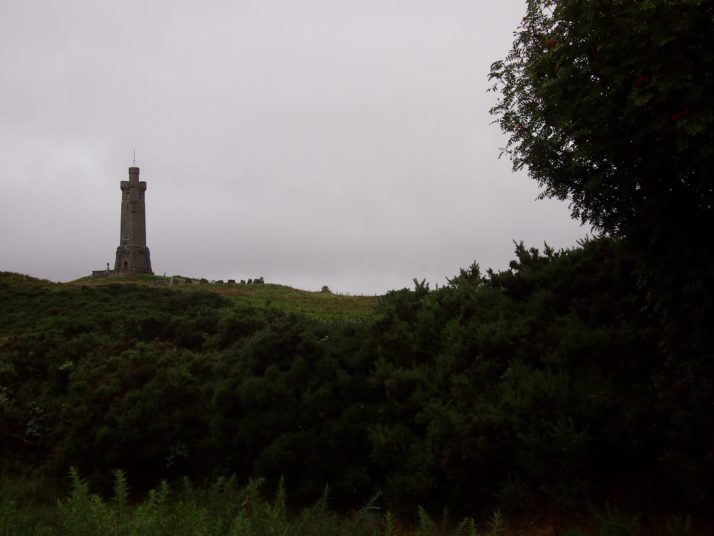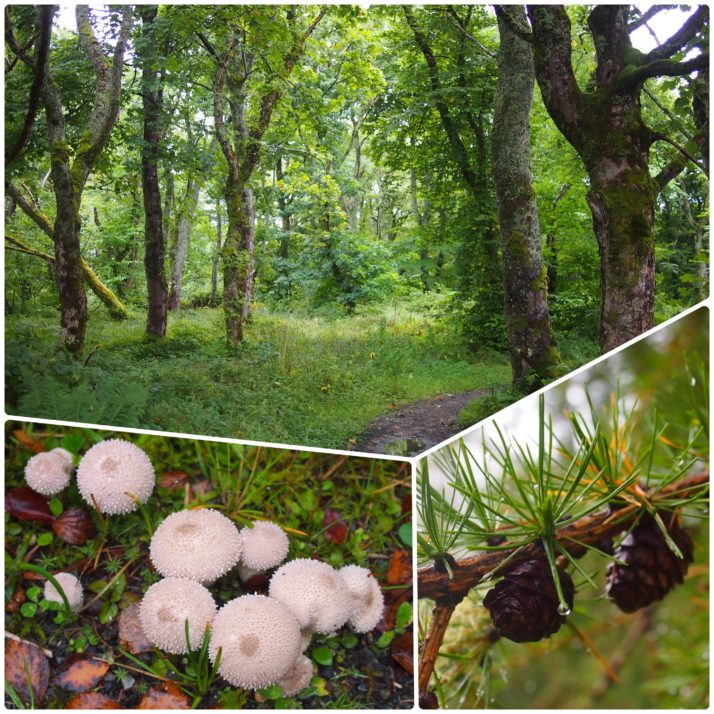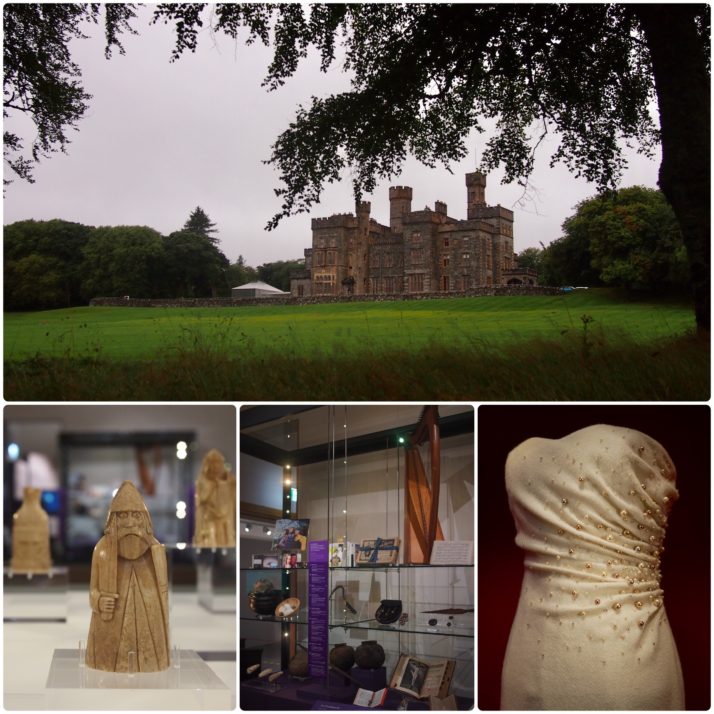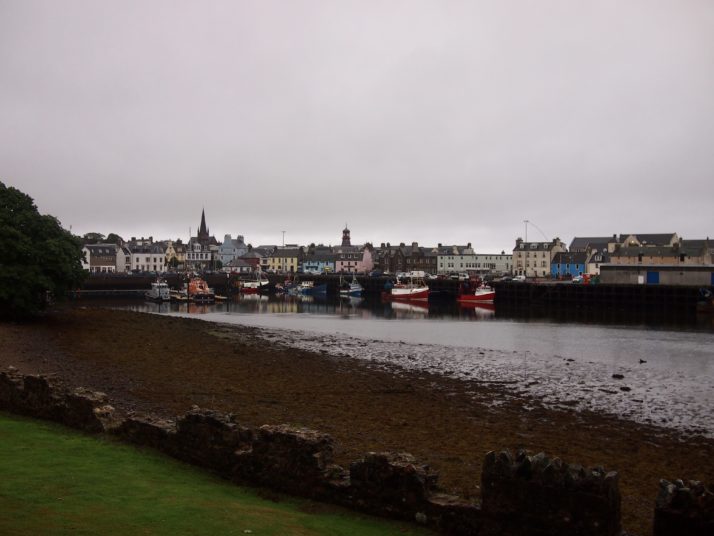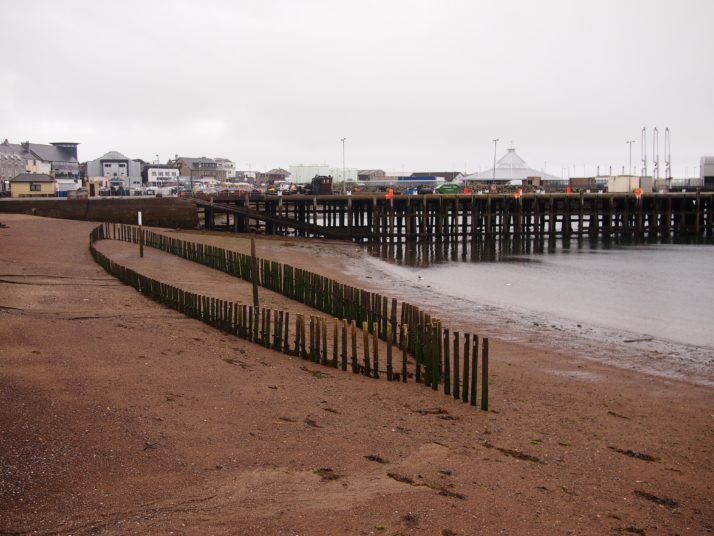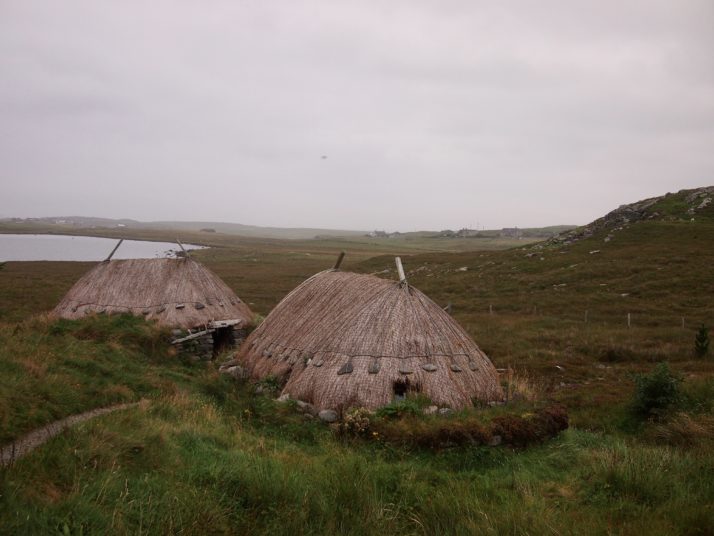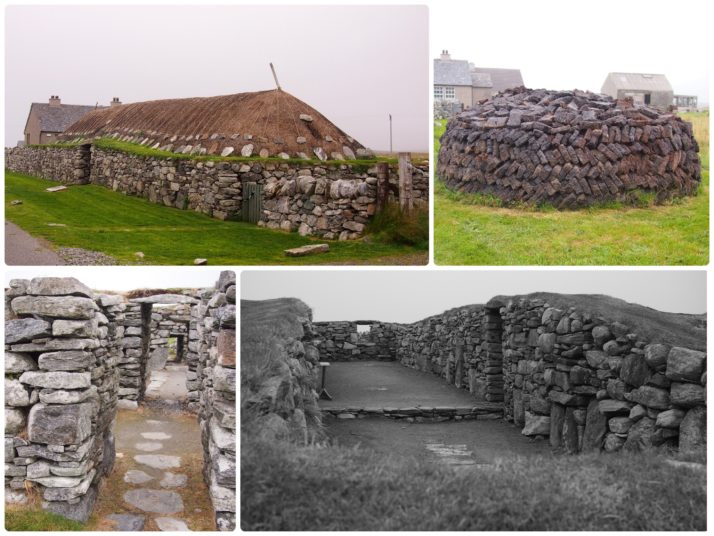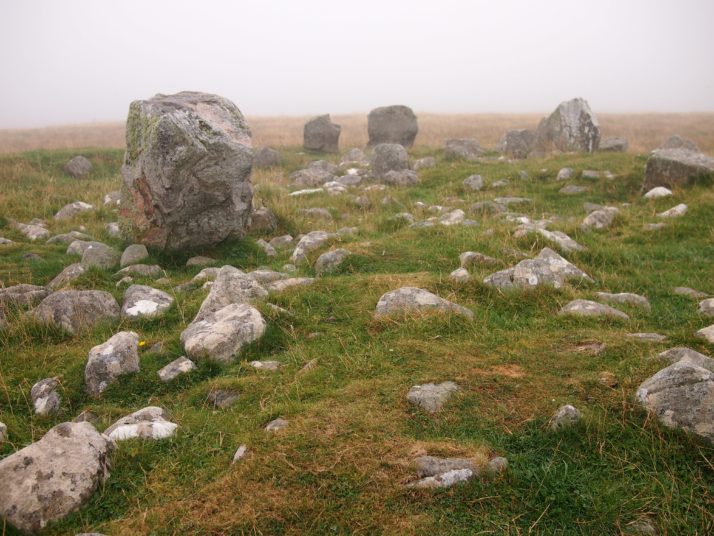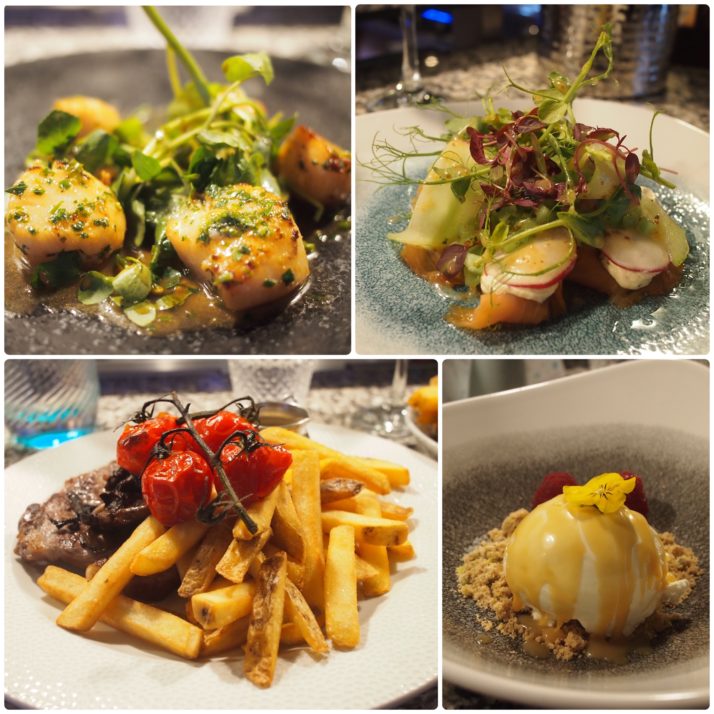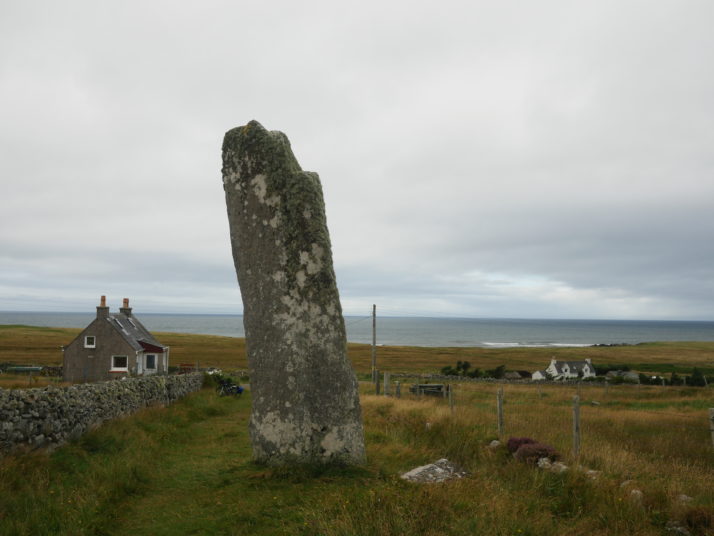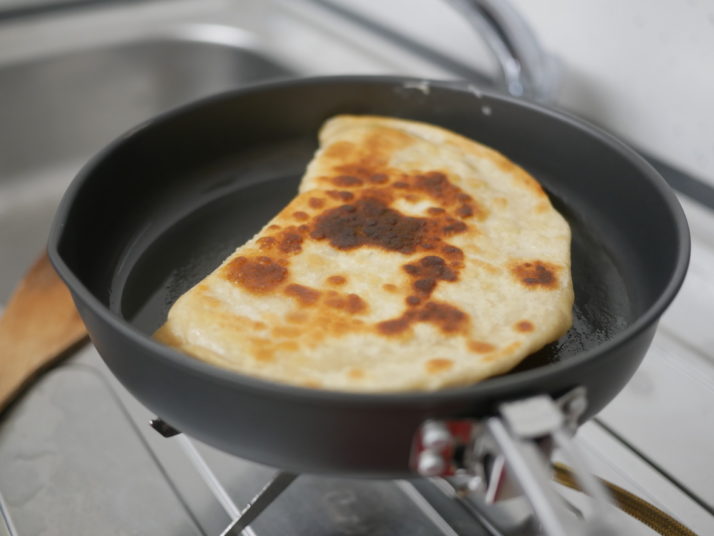| Distance cycled |
50.8 miles / 81.8 km |
| Cumulative distance cycled |
290 miles / 466.9 km |
| Islands visited (daily total) |
Lewis |
| Total islands visited |
10+1 of 10 |
| Average speed |
11.6 mph / 18.7 kmph |
| Weather conditions |
Overcast with sunny spells, glorious tailwind on the way there and brutal headwind on the way back |
Today’s the day we complete the Hebridean Way!
Given that the Butt of Lewis is ~25 miles from the nearest campsite on our map (though we had heard of a bothy/bunkhouse near the top), and the only road to Stornoway and the ferry home is ~15 miles from said campsite, it made sense to us to stay 2 nights here with the added benefit of doing the final stretch with unladen bikes – our legs and Julie’s pannier rack would thank us by the end of the day!
With near perfect cycling conditions of slightly overcast skies and tailwinds we set off, our first stop en-route is a giant whale jaw-bone arch which the locals salvaged from a beached whale in 1920.
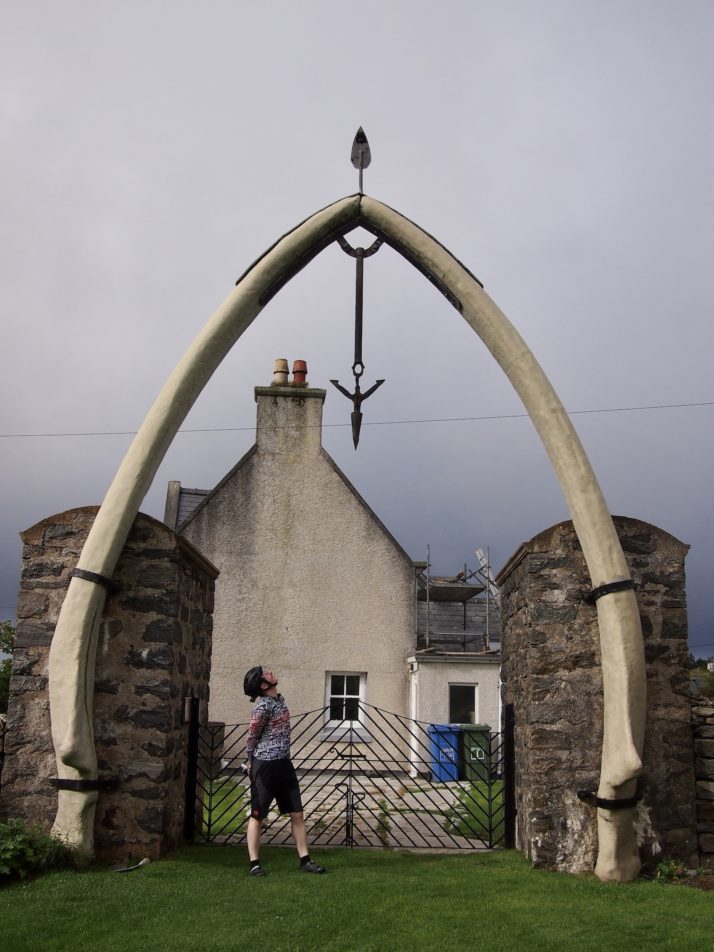
Andrew standing under the whale bone arch – nope, I’m not brave enough to stand under the harpoon!
The story goes that the whale washed ashore with the harpoon in its head trailing 50 feet of rope. A whaling company was contacted but no-one came to deal with it. The decaying whale caused quite a smell, so the locals rolled up their sleeves and sorted it themselves! As a memento, the village postmaster and general merchant managed to get the 4 tonne lower jawbones from the shore and erected them at his home as a gateway. The harpoon hangs from the centre.
It wasn’t on our map, but a Sheiling House was signposted and visible from the road so we stopped to investigate
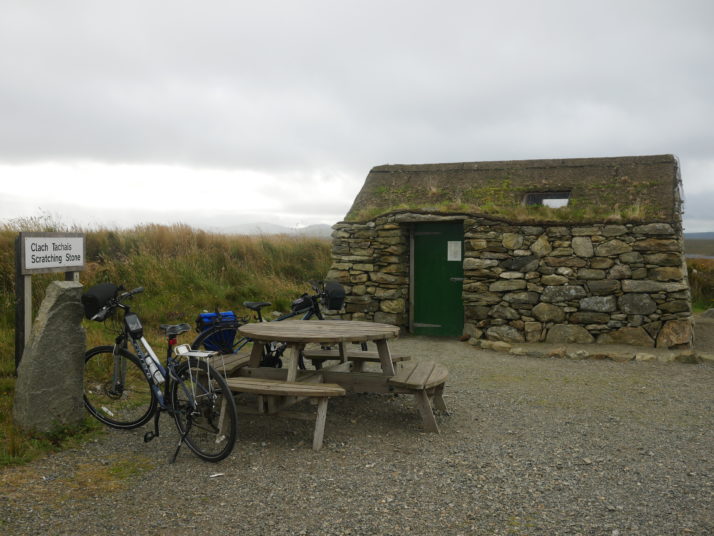
Sheilings are small huts or buildings used during the summer as a base near grazing land and are often in remote locations
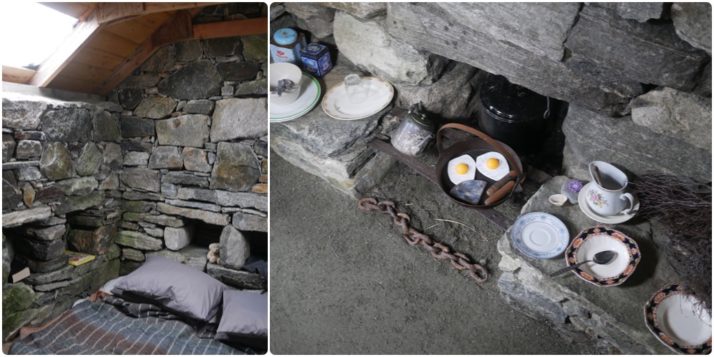
It looked very inviting, especially as this one was made up and ready to move in. That is until we realised the bed is probably crawling with bugs.. on second thoughts..
A little further along, and past the turning to Stornoway we stopped at the Ballanstrushal Standing Stone, where, seated on the picnic bench was a guy taking in the scenery with a cup of coffee. Turns out he lives in the house right next to the stone and he told us there was “quite the story about the old woman that is buried beneath it” but didn’t elaborate any further!
Having boiled some eggs we’d bought from a roadside honesty box yesterday, we stopped for accompanying provisions first at the shop in Borve (side note: I think I’ve seen a sign for a Borve on every island – sometimes multiple!) – which was like stepping into the 70’s with the brands available – and then the community run co-op at Cross which was well-stocked, had a little bakery and made their own black pudding!
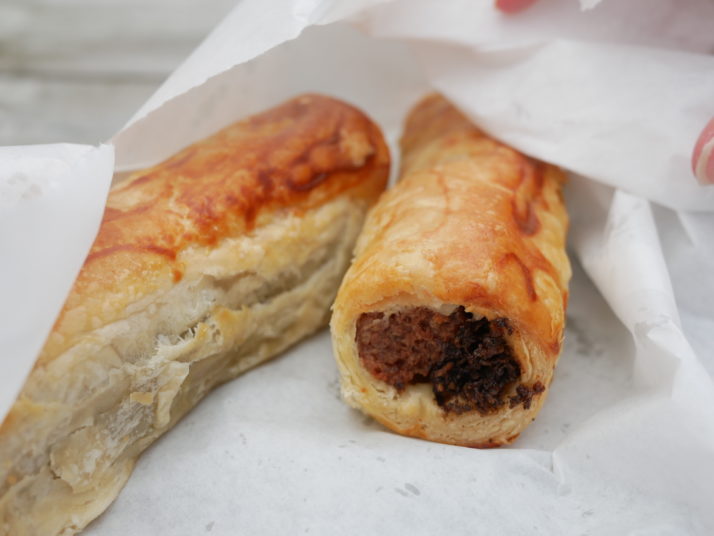
A sausage and shop-made black pudding roll – still warm too, lovely!
Refuelled, it wasn’t long before the lighthouse at the Butt of Lewis peeped over the horizon and after nearly missing the turning and spotting a buzzard take off from a roadside fencepost we were there – the official end of the Hebridean Way.
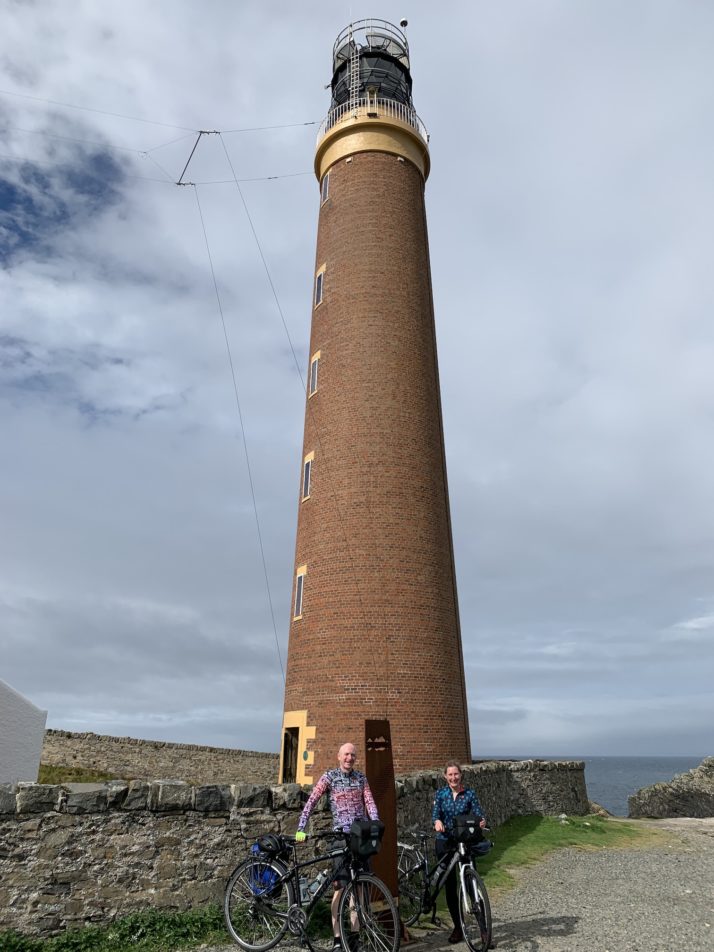
Made it! The sun came out for 10 minutes when we arrived too, how nice! Officially it’s 185 miles from the start in Vatersay, at this point we’d ridden about 275 miles
We enjoyed our lunch as 4 or 5 seals enjoyed bobbing in the rocky coves in the waters below!
A little further along the northern coastline is the small and quiet fishing marina of Port of Ness which has a lovely (and very busy) cafe. We didn’t stop for lunch as we’d just eaten but we did use their semi-public facilities which is notable as there aren’t that many public loos along the route!

The quiet marina at the Port of Ness. There’s a memorial to the fishing boats lost at sea from near this vantage point
There’s a maxim that things going up must come down, and if there were a cycling equivalent then it must surely be about headwinds – and as soon as we turned south the weather was against us and took a turn for the worse. No more than a drizzle and not enough to get us wet or dampen our spirits but it did make it feel like a bit of a heads-down slog, especially as we’d stopped at all of the interesting places we wanted to see on the way up.
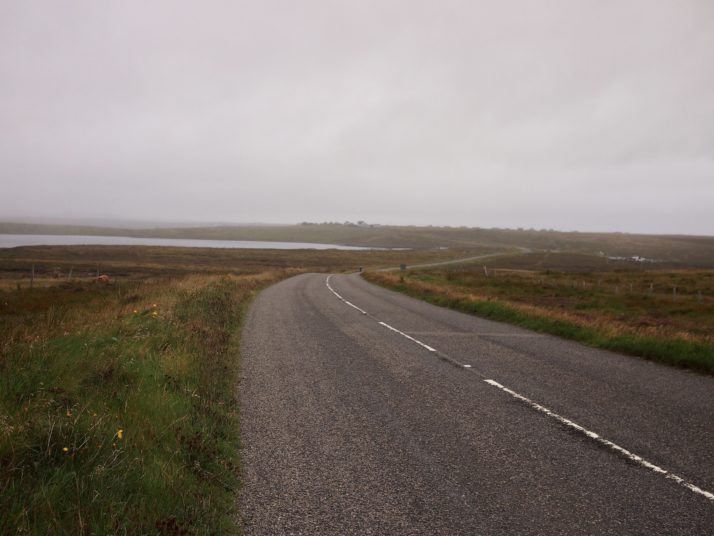
Lovely view even with the drizzly yucky headwind
Back at the campsite, showered and changed, we celebrated with nibbles, a mini Highland gin and tonic, a bottle of red wine and camp-stove made mozzarella and tomato calzone!
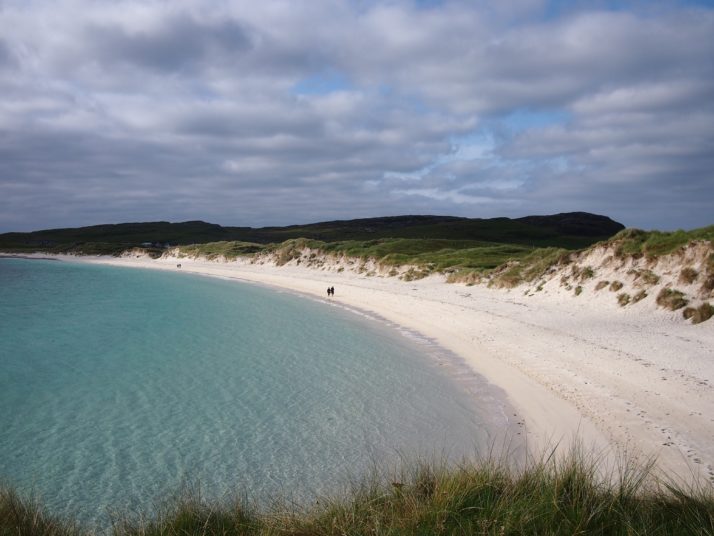
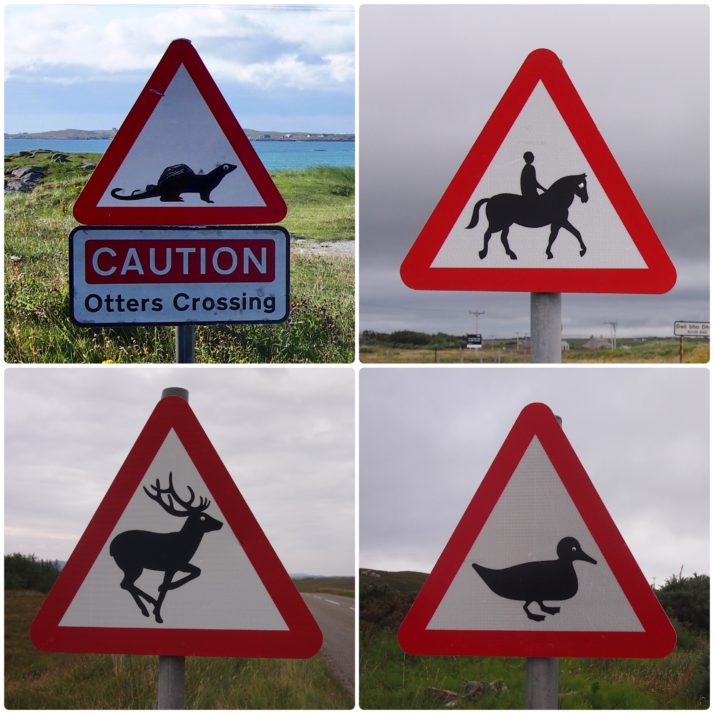

 two year trip
two year trip